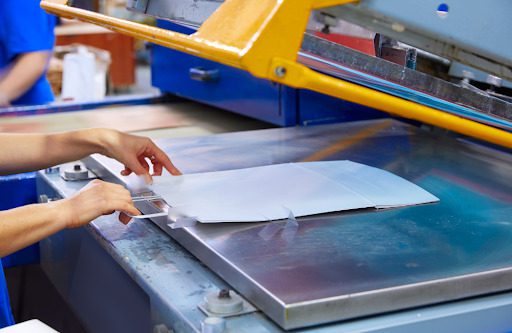These days, sublimation printing is growing impressively due to its growing user demand. It can be adopted as a hobby to create customized designs at home or opt for it as a full-time business.
The good thing about this printing technique is, that it let you create any of your custom designs on any material which can be used for sublimation which may be Acrylic, Glass, Fabric, and leather.
So you are free to create any design and express your creativity through sublimation printing.
If you are new to sublimation printing and willing to learn more in this vast field, you can learn more about it from this sublimation printing guide. Sublimation printing is covered in detail in the guide.
But Before discussing the pros and cons of it, you first need to understand what is sublimation printing.
What is Sublimation Printing?
In terms of science, Sublimation refers to the transformation of a substance straight from a solid to a gas state. It doesn’t pass over the liquid normal state and only happens at certain pressures and temperatures.
In simple terms, it’s a process of printing that transfers designs onto fabric or a material with the help of heat and ink.
How Does It Work?
Sublimation printing utilizes heat to combine fabric and ink as one.
Then, the design is printed onto paper. The inks change into gas when they are brought under the heat. They then mix with the fabric to permanently print on the fabric.
The results are long-lasting and are less susceptible to fade since the ink is incorporated into the fabric or substrate, rather than being merely laying over the top of a regular print.
These pores in the fabric expand as a result of the heat. As the ink cools, it returns to its solid state by applying pressure.
The result you get is a durable full-color image that doesn’t break or peel away from the paper.
Advantages of Sublimation Printing
Printing full-color images on hard surfaces are possible with sublimation.
- You can choose from a wide variety of colors. Sublimation allows for the creation of thousands of colors. It’s also not expensive for adding additional colors to the design.
- Printing costs are the same for 1 item or 1000 items. Therefore, there is no need for minimum order quantities, and great for one-off merchandise and items to promote small companies schools, charitable organizations events, sports teams, birthday reunions, parties and other events!
- The most appealing benefit of this method is simply the flexibility you can have in your design, which isn’t always the case with other methods.
- The long-lasting nature that the style has is a great plus feature, as is the design that will not crack, peel or peel or fade. Even after a washer a number of times, the garment will never go to the back of your closet!
Disadvantages of Sublimation Printing
Where one side of the image is positive the other side may be the opposite of that. In simple, every method has some benefits and disadvantages as well. So here are some of the few disadvantages of sublimation printing.
- Substrates must be coated with polyester or composed of polyester fabric.
- Substrates should be light or white. It is not possible to print on black or dark-colored products.
- Sublimation inks are expensive in comparison to OEM inks. Product prices should reflect this.
- You need to be careful while washing sublimation shirts as they are not treated like normal shirts. So, sublimated material requires extra care.
Final Verdict
With all the benefits of sublimation, it’s easy to see why it’s become the most popular choice for decorators using digital technology!
One of the most important aspects of successfully using sublimation printing is understanding the limitations of this method and selecting a design that is suitable.
Reading through both the benefits and drawbacks and taking a look at the examples below will help you be able to determine whether the style you’ve got in mind will work well with Sublimation Printing or if it is better off using Direct to Garment (DTG).
Dye sublimation and direct printing are both useful in their own way and offer distinct advantages as printing methods for textiles, fabrics as well as other materials. Prints of high quality can be produced that produce stunning images using these two printing techniques.





























